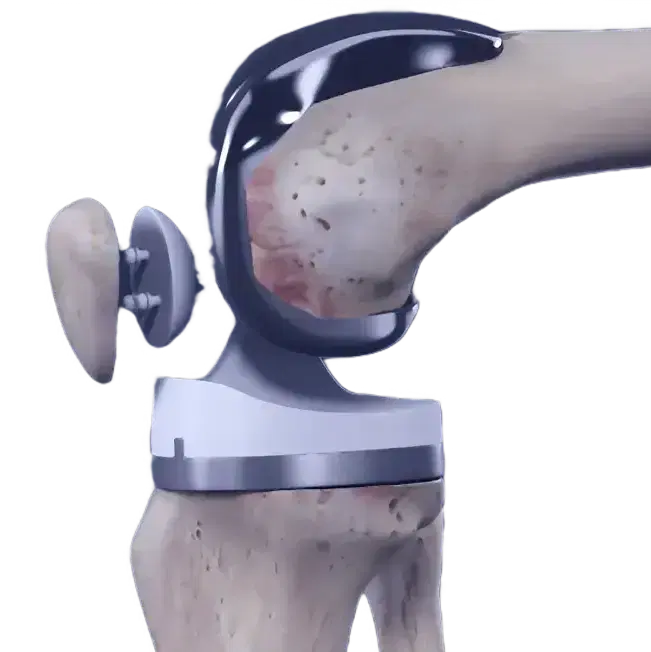
Patella Instability
(Dislocation or Subluxation)
What is the difference between dislocation and subluxation?
Dislocation: Patella fully moves out of knee position, needing spontaneous or manual reduction.
Subluxation: Patella partially moves out of place, quick and less painful. Both are part of patella instability spectrum.
How does a patella dislocate?
Usually it occurs with a non-contact twisting injury as the knee is bending. Less commonly it occurs with a direct blow to the inner side of the patella, which knocks it out of place.
What is the
Patellofemoral pain syndrome?

Patella subluxation (partial dislocation) on the right
After a twisting injury or direct blow to the knee, many patients experience a knee "pop." Some may even see their kneecap sitting on the outer surface of the knee, which often returns to its place when the knee straightens. In some cases, a visit to the Emergency Department is needed to put it back in place, often with sedation.
The experience is usually marked by severe pain until the kneecap is realigned. Swelling is common, restricting knee movement and causing discomfort. Typically, patients require crutches, a knee brace, and pain medication initially.
Subluxation, on the other hand, is less painful, involves less swelling, and often does not require hospitalization.

Patella dislocation

What are the risk
factors for patella instability?
There are several well-recognised risk factors for patella instability. These include
Female gender
Abnormal shape of the the femur
Joint laxity, more common in females
Patients with a high kneecap
Abnormal alignment of the knee
Abnormal rotation of the hip or thigh bone
Signs of generalised joint laxity

What should I do
after an episode of instability?

RICE
Initial treatment aims to control pain and swelling using RICE (rest, ice, compression, elevation) along with analgesics like non-steroidal anti-inflammatory medication.

Knee splint removal
Once swelling and pain subside, it's crucial to remove the knee splint and begin gentle knee movements to prevent muscle wasting.

Avoid bone deconditioning
If you have crutches and no fractures confirmed by x-rays, try to bear weight on the leg as tolerated to prevent muscle wasting and bone deconditioning.


Do I need to see an
Orthopaedic Surgeon?
You should see a surgeon for a thorough assessment, investigation and treatment plan.
In my opinion, every kneecap dislocation should be assessed with an MRI scan. In some cases, dislocation may cause a cartilage fragment to dislodge, which may require repositioning or removal via keyhole surgery to prevent further complications.
The MRI scan helps identify risk factors that can affect the likelihood of future dislocations.

Cartilage damage from a patella dislocation (yellow arrow)
What are the chances of having another episode of instability?
Most patella dislocations will occur only once. The risk of recurrent dislocation is between 10-40%.
The risk is lower in males and those with a direct blow that caused the dislocation.
Who should have surgery?
A minority of patients have recurrent instability
Ranging from complete patella dislocation to episodes of patella apprehension or subluxation (feeling like it will "pop out" without actually doing so).
Surgical intervention may be beneficial for these individuals.
What is the surgery that is performed?
This depends on a number of factors including
The age of the patient
Any underlying mechanical abnormalities
Any surgical treatment should address any underlying predisposing factors. Types of surgery that can be offered are covered n the section under knee surgeries but may include:
A tibial tubercle osteotomy
A medial patellofemoral ligament (MPFL)
reconstruction
A combination of the above
A femoral osteotomy

Do you need a
Knee replacement?
Dr Seeto in affiliation with Medibank Private and East Sydney Private hospital, offers a program for eligible Medibank Private Members, to eliminate medical out of pocket costs for your Knee Replacement.
The program includes a pre-surgery preparation program, spending the minimal time necessary in hospital, as well as home rehabilitation if necessary.
Book a consultation
today
9:00 am - 4:30 pm


